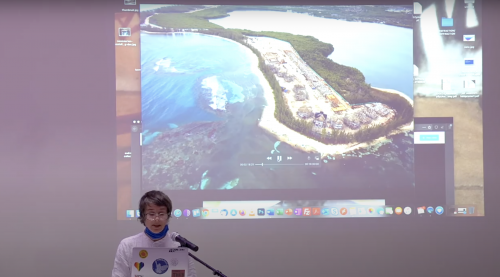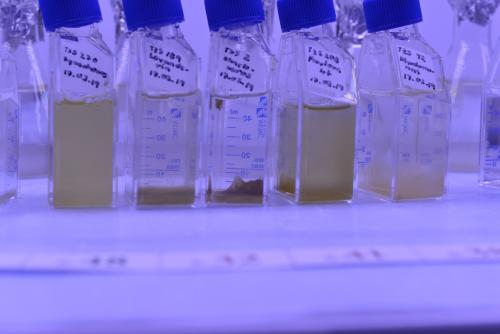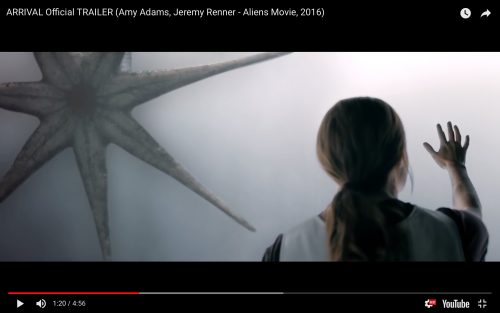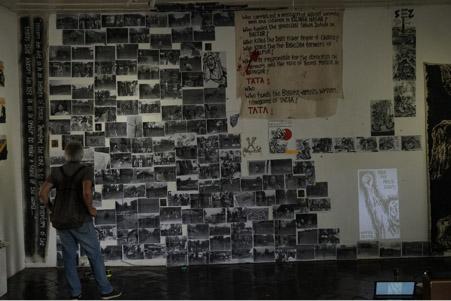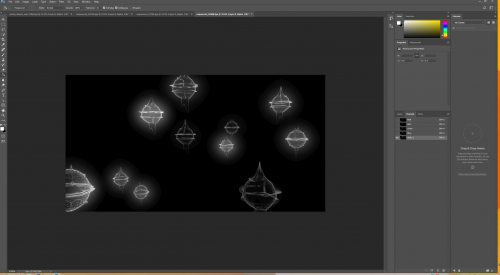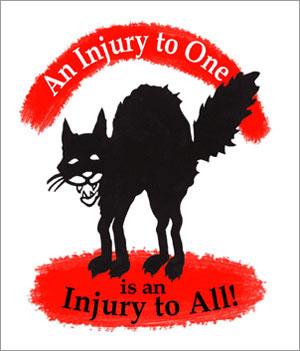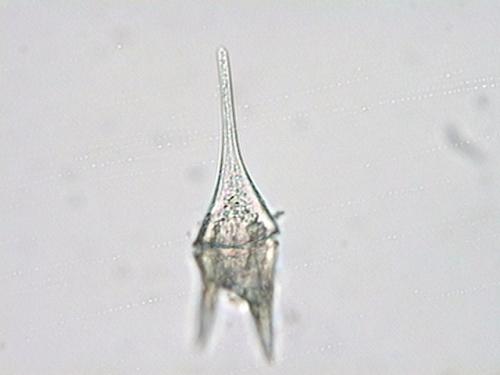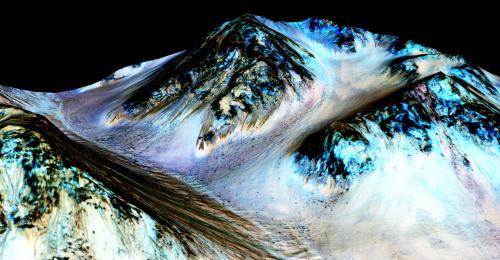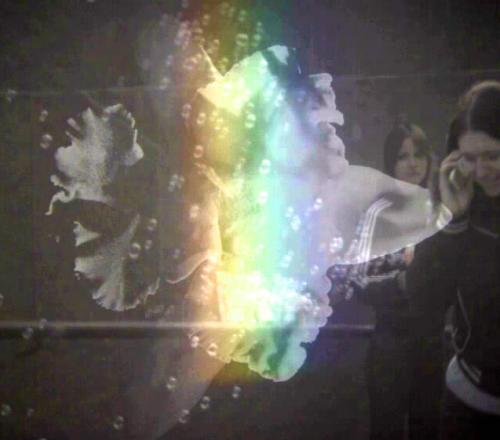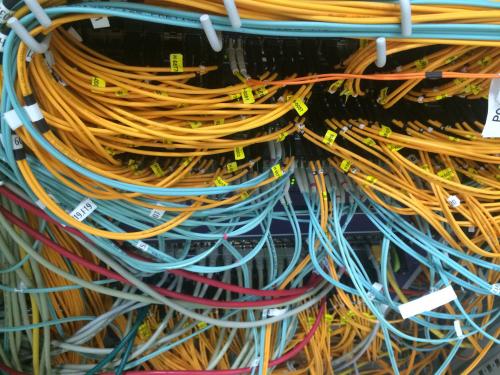SMW: A lot of artists including me are very attracted to what is referred to as ideas of a new materialism, related to a practice. It claims to transform prevailing dualism as in nature/culture, body/mind, female/male, technology/subjectivity. In a way it gets accused of neglecting a social realism. However it addresses the senses and plays with the body and the mind as equal parts. I would affirm thus in a feminist embodiment it actually is a more “real” realism. It uses transhuman, posthuman to describe a relation to the environment. Historical materialism also relies on relations and dynamics that include species and minerals, the fog and the mud as well as noise data.
FBB: Yes, we can keep out of the way the words that imply a reference to the human, but we cannot skip a reference to the mutating relation between the conscious organism and the inorganic sphere of technology. Here is where the problem of posthumanism (and also, in a different sense the problem of transhumanism) emerges.
My vision of materialism (old and new) is based on the idea that life and consciousness are a process of continuous recombination of matter. Consciousness is certainly the effect of a special configuration of material flows, but it is also a condition for self-reflection and, what is more interesting, it is also the condition for the annihilation of matter itself.
Schopenhauer writes that suicide is the masterpiece of the maya. He means that consciousness is the condition that makes possible the emergence of a world, in the space of consciousness itself.
If you shut down conscious life you cancel the world as ex-istence. That means that you cannot ignore the specificity of consciousness in its relation to evolution. And the concepts of “humanism” (post, and trans) are dealing with the relation between consciousness and evolution, not with a sort of metaphysical essence of the “human”.
Humanism has not to be considered as an ontological definition, but as an ideology, a vision of man as the center of the social universe. This centrality is endangered nowadays. The ideological implications of the humanist centrality of man are relevant for the understanding of contemporary culture. You can skip the terms referring to the human, but you cannot skip the appreciation of a new condition of conscious agency.
When Haraway talks of posthuman she's clearly criticizing the limits of the humanist definition of the agency, but she is also referring to the extension of the anthropological sphere produced by technology. The pervasive feature of technology and particularly of bio-technology and of info-technology is transforming the anthropological condition and the relation between conscious life and the environment in which conscious life evolves.
There is a sort of dogmatic embarrassment in the refusal to refer to “humanism” (post and trans). I know that Deleuze and Guattari refuse the separation between human consciousness and technology, they actually argue that technology is part of the process of subjectivation. But we should not be embarrassed to talk about the effects of the techno-mutation on the anthropological evolution, and particularly on the evolution of consciousness.
SMW: What you call dogmatic embarrassment is that related to moral or ethics? All these terms seem restricted. Should there not be a way to go beyond that maybe with art or fiction, poetry and shamanism?
FBB: No, it is not an ethical embarrassment I’m talking about. It’s the dogmatic interpretation of Deleuze and Guattari’s thoughts (incredibly, also Deleuze and Guattari can be transformed into dogma, although they are very far from dogmatism).
It has nothing to do with ethics or morals. I simply say that we should not be embarrassed by the necessity of using words that remind of an essentialist definition of human. We should be able to distinguish between an essentialist definition of human and an anthropological definition of the relation between subjectivity (the software of consciousness) and the evolution of the environment, particularly technical environment.
What is at stakes in the process of technical mutation is the freedom and self-determination of that form of conscious organic combination of matter that we are accustomed to call “human”.
SMW: Technology even seems to mystify the gap between nature and culture, body and object? Creating the illusion that none of it needs material or is material, but on the other side only in the material seems to be possibility, sensuality and interaction/ communication? Is this not a contradiction?
FBB: The separation line between nature and technology is artificial, as we know well. Nevertheless it happens that organic matter, and particularly conscious organic matter need a certain environment to be what they are and to act as they act. I mean, you cannot imagine that a certain being (the human body) will survive in conditions that are totally intolerable for the material consistency of it. This does not mean that the human body is “natural”. I know that human body is the cultural product of a cultural and technological process, I know that consciousness is shaped by technology, media, and by psycho-aesthetic stimulations, I know all this. Nevertheless you cannot deny that this cultural technological construct that we call “human” body cannot reproduce in environmental conditions that make its reproduction ad its physical activity and so on impossible.
Here we are dealing with the problem of the relation between consciousness and evolution. Obviously evolution is acting on consciousness, but the other way round is similarly true? I mean, can we imagine that consciousness may act on the evolutionary process?
You know that recently there is talk about neuroplasticity, the ability of the neural system to adapt, to change in such a way to cope with the environmental changes and mutation. That’s good. But my question is: can we consciously interact with the neuro-mutation? Can we consciously and politically act on the evolution of the brain?
SMW: There is a strange beauty maybe also to do with the abject in the sound of a certain surface and a challenge to capture the interaction of a species of plankton for example that is beyond representation and technology in a time where nearly all relations are networking for a higher market value. The Hunger Games (2012) is not a good film and yet there is something disturbingly real in it as a vision – so much that I want to call it 1984 in an Orwell sense and also a “material”. This does not necessary make sense but I know that I am not the only one who observes this.
FBB: The Hunger Games is not a good film, I agree with you. But it is the third blockbuster ever in terms of audience. Millions of young people have gone to see the movie in the theatres, and this is hugely significant. I mean, this film has touched a cord, but which cord? This film has produced cultural and psychological effects, but which are the effects produced by that film? You know, Donald Sutherland, who is magnificently acting as the President of the Panem ultra-totalitarian system, said in an interview that the movie has to be seen as denunciation of the totalitarian system of capitalism. But in my opinion the movie has no political intention, nor suggests any moral approach. Suzanne Collins and Gary Ross know that their audience are not going to see that movie with socially oriented expectations. Class hatred is not the issue. Helplessness is the issue. Hopelessness is the issue.
I roamed around in The Hunger Games blogosphere and talked with students about the film, and I draw the conclusion that the movie captures the mood of the wide majority of the precarious generation, which is not questioning reality by the point of view of a possible alternative. As the only imagination of future is dystopian, dystopia is the world that we’ll be living in. The only conclusion: let’s try to be the winner of the hunger games, let’s be prepared to succumb.
That means that the mutation is mutating the conscious organisms who are invested by the mutation itself, and at the end these organisms are led to look at the mutation as the only possibility left.
This is abject as you say, but there is a special beauty in abject things. Contemporary art (and contemporary cinema) know quite well this beauty of the abject. Perceiving the beauty of the hell is a way to get conscious of what the hell is, and also is a way to enter in a relation of sensibility with the hell itself. The Hunger Games is a description of the hell (the hell that financial capitalism is bringing into precarious life) but it is also a way to consciously elaborate the evolution of the environment in which we live, as conscious and sensible organisms.
SMW: The environmental processes affect us. But to which extent? And I wonder if that does not necessary entangle an ideology (and capitalism) like an insect that becomes resistant to a poisonous element in its environment.
And if the evolution-consciousness problem is the core of how environmental processes and changes are affecting us, how does that look on the material basis? Will our interaction change so that we are more comfortable with acids, toxics and poisonous material?
FBB: You ask me also to which extent the environmental change is affecting our lives. I don’t know if we’ll be able to change the conformation of our lungs in order to comply with a poisonous air. At a certain degree we are already doing it. I suffer from asthma, because the environment of the city where I live and breathe is so poisonous that lungs react in a certain pathological way. But scientists have produced betamethasone and other cortisone products that make it possible for my lungs to breath notwithstanding the poisonous fog.
When we use the word “mutation” we are referring exactly to this mutual and irreversible symbiotic transformation of the organism together with the environment. I know that the insect named human being has a special resiliency: thanks to intelligence it is able to adapt, and adaption in turn is mutating its intelligence.
Nevertheless the mutation is painful, and we are living a time of intense and rapid mutation. This is the point: not the extinction of the human insect, but the pain involved in the present mutation, and also the direction in which the mutation is transforming the conscious and sensitive organism of the human insect.
What will be the direction of the mutation? It may be the increasing determination of the physical and mental behavior, the neuro-totalitarian domination and the forced assimilation to conditions of slavery, submission and suffering. But, on the contrary, it may be the disentanglement of possibilities that so far have been hidden.
SMW: The evolution-consciousness problem is related to the body. And the body can be seen in a conceptual as well as physical/material way which allows us to see interaction not only as the basis for the social and the political, but also between species and living organisms and maybe also to matter. It seems to demand a broader understanding of ecology.
The extension of the anthropological sphere produced by technology means an age of anxiety as much as I observe on one hand but on the other could there be a luminous spot where recognizing sensible organisms and training is the priority like you mention? (Maybe sounds utopian but comes from Sci-Fi.) And what could that look like?
FBB: This in my opinion is the main task of anthropological research (and of technological research too) in the next decades: how to adapt the human neural system to the changing environment. It is the problem of neuroplasticity. But neuroplasticity is an ambivalent field of research and experimentation. The current theoretical focus on neuro-plasticity can pave the way to a process of adaptation of the brain to an environment that grows every day more intolerable for the psychological, aesthetic and ethical mind that has been forged through the past age of human civilization. Neo-human adaptation, adaptation to the connective mode of communication, adaptation to the ferocity of competition, to the barbarity and horror of the submission of life and attention to the financial abstraction may take the form of a sort of social lobotomy: pharmacological or surgical cancellation of what in the human psychology is incompatible with the abstract domination.
But we can imagine a different outcome: the alternative possibility lies in the conscious ability of brain self-molding, which cannot be considered purely in terms of evolution but also in terms of consciousness. This implies a process of autonomous recomposition of the living forces of the general intellect (a process of social organization of the cognitive workers), the recomposition of the general intellect with its social and erotic body, and a process of epistemological re-conjunction of the disjointed fragments of living knowledge.
The ethical, aesthetic and psychological suffering of cognitive labor can become the trigger of the re-orientation of the networked knowledge, disentangled from the pathogenic domination of financial capitalism. The post-capitalist re-orientation of knowledge should not be regarded as a problem of moral or political will, but in terms of adaptation of the mental activity to the neuroplastic evolution of the brain, and in terms of conscious transformation of the techno-neurological environment.
SMW: Especially with technology being so intoxicating already in many conscious and unconscious ways it seems to be a mistake but consequence of thinking that the environment is out there in a dualistic mind frame. Whereas to see interactions way more complex would allow to get away from anthropocentrism and still talk about sensible organisms and skins in general?
FBB: You know I’m not that afraid of anthropocentrism, because I think that in a certain degree the point of view of the anthropos can not be dissociated from the understanding of the all encompassing process. The point of view of perception, of vision, of understanding, of nomination is the anthropos. So how can we disregard the very subject of the vision, the “sufferer”, in the sense of the body that experiences the transformation of the environment as a wound and simultaneously as a possibility of healing.
The conversation is an excerpt of a longer contribution to a catalog for Nature after Nature (forthcoming Fridericianum Kassel). It has been developped over a seminar, public talks and email exchange. Franco Berardi Bifo is a contemporary writer, media-theorist and media-activist.
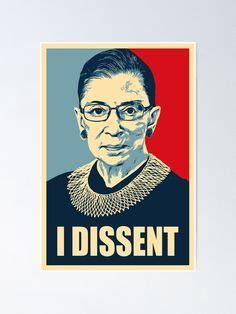

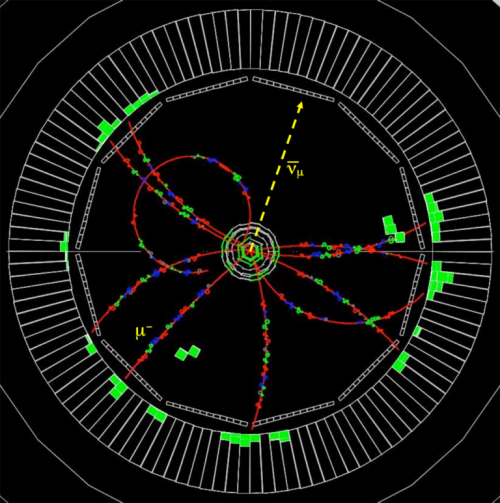


![Blackwash [working title]](/sites/default/files/styles/medium/public/56fe8ebf-7f16-4486-a251-6d85b1e906c3_4_5005_c.jpeg?itok=rIFeYRMo)
